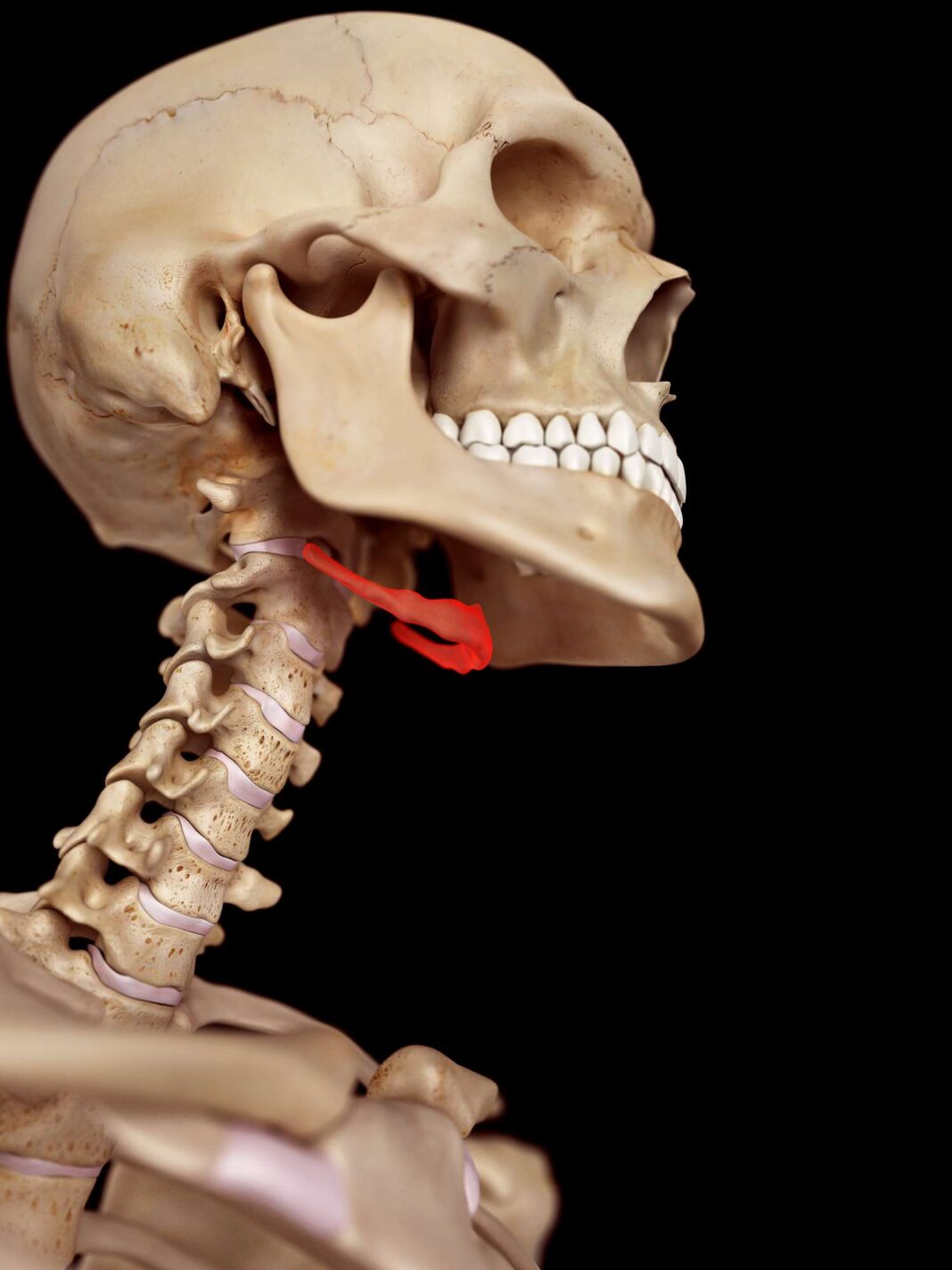Anatomy of the Hyoid Bone
The hyoid bone is a small horseshoe-shaped bone located in the front of your neck. It sits between the chin and the thyroid cartilage and is instrumental in the function of swallowing and tongue movements.
Unique Characteristics
The hyoid bone is rarely discussed, but it is a unique part of the human skeleton due to its horseshoe shape and because it is mobile. This means that other than its attachment site to the thyroid cartilage (which is part of the larynx, or voice box), it floats.
Functions
The hyoid bone helps with producing sound, coughing, moving the tongue, breathing, maintaining head posture, and avoiding choking. Since the hyoid functions as an attachment point for the larynx, it’s involved in any function that the larynx is involved in.
Rehabilitation
The hyoid bone is small, and it functions as an attachment point for many muscles involved in swallowing, jaw movements, and respiration. Swallowing function may be impaired due to problems such as stroke, neck injuries, or jaw and neck cancers. If that occurs, working with a specialist like a speech pathologist may be useful.
Summary
The hyoid bone, a small horseshoe-shaped bone that sits at the front of the neck, is both unique in structure (as it is not connected to other bones) and essential in function. It is attached to cartilage that protects the larynx and serves as an attachment site for several neck muscles.
Conclusion
In conclusion, the hyoid bone plays a crucial role in various functions, including producing sound, coughing, moving the tongue, breathing, maintaining head posture, and avoiding choking. Its unique characteristics and functions make it an essential part of the human skeleton.
Frequently Asked Questions
Q: What is the hyoid bone?
A: The hyoid bone is a small horseshoe-shaped bone located in the front of your neck.
Q: What are the functions of the hyoid bone?
A: The hyoid bone helps with producing sound, coughing, moving the tongue, breathing, maintaining head posture, and avoiding choking.
Q: Can the hyoid bone be fractured?
A: Although they are considered rare, hyoid bone fractures are usually caused by a strangulation/asphyxiation injury, neck trauma, or a motor vehicle accident.
Q: How can I rehabilitate my hyoid bone?
A: Working with a specialist like a speech pathologist may be useful if you experience swallowing function impairment due to problems such as stroke, neck injuries, or jaw and neck cancers.




